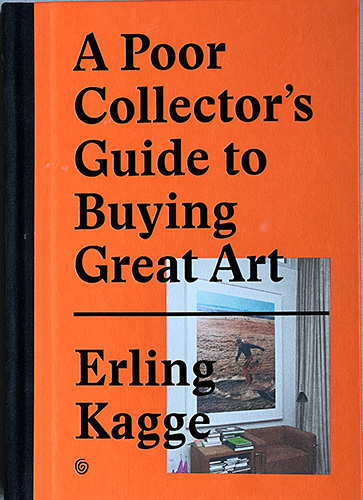The Swedish collector Gustaf Douglas was once asked by a Swedish Business Magazine about his approach to art collection. His immediate response was to recommend starting by purchasing art books and educating oneself before making any art acquisitions.
Title: Building an Art Collection: A Creative Journey
Introduction
Art collection is a captivating pursuit that allows individuals to curate and display unique pieces of artwork that reflect their tastes, interests, and passions. Whether you’re an experienced art enthusiast or a novice, building an art collection can be an exciting and rewarding endeavor. This essay will guide you through the steps to create a well-rounded art collection that reflects your personality and style.
- Define Your Vision and Interests
The first step in building an art collection is to define your vision and interests. What type of art speaks to you? Do you prefer traditional or contemporary art? Are you drawn to specific themes, styles, or artists? Take the time to explore various art forms, attend art exhibitions, and immerse yourself in the art world to refine your preferences.
- Set a Budget
Art collecting can be a costly venture, so it’s crucial to set a budget that aligns with your financial capabilities. Determine how much you’re willing to invest in your collection and stick to it. Keep in mind that art appreciation and acquisition can be a long-term commitment, so plan your budget accordingly.
- Research and Educate Yourself
Before making any purchases, educate yourself about the art market, artists, and the specific pieces you’re interested in. Read books, attend lectures, and visit museums and galleries to gain a deeper understanding of the art world. This knowledge will empower you to make informed decisions and avoid impulsive purchases.
- Visit Galleries and Museums
Regularly visiting galleries and museums is an essential aspect of art collection. These spaces provide the opportunity to see a wide range of artworks, interact with artists, and network with fellow art enthusiasts. Take notes, ask questions, and develop relationships with gallery owners and artists to expand your knowledge and connections within the art community.
- Start Small and Diversify
When you’re ready to start your collection, begin with smaller, more affordable pieces. Diversify your collection by acquiring works from various artists, styles, and mediums. This diversity will add depth and character to your collection while allowing you to explore different aspects of the art world.
- Trust Your Instincts
While research and knowledge are crucial, trust your instincts and personal taste when selecting artwork. Your collection should reflect your unique perspective and emotions. Choose pieces that resonate with you on a personal level, as this connection will enhance your enjoyment of the collection.
- Consider the Context
When acquiring artwork, consider the context in which it will be displayed. Think about the space, lighting, and surroundings in which the art will be showcased. Properly framing and displaying your collection can significantly impact its visual impact and overall aesthetic.
- Care for Your Collection
Maintaining and caring for your art collection is essential to preserve its value and beauty. Protect your artworks from direct sunlight, temperature fluctuations, and humidity. Regularly inspect and clean your pieces to ensure their longevity.
- Document and Catalog
Create a detailed catalog of your art collection, including information about each piece, such as artist, title, date, medium, and acquisition details. Maintain records of appraisals, provenance, and any restoration work. A well-organized catalog will not only help you manage your collection but also facilitate its eventual sale or bequest.
- Share Your Passion
Lastly, share your passion for art with others. Invite friends, family, and fellow art enthusiasts to view your collection. Engaging in discussions about your pieces and the stories behind them can deepen your appreciation for art and foster a sense of community.
Conclusion
Building an art collection is a deeply personal and enriching experience. It allows you to explore the world of creativity, connect with artists and like-minded individuals, and create a unique reflection of your taste and style. By following these steps, you can embark on a fulfilling journey of art collection that will continue to evolve and inspire you for years to come.
“In my personal library, I have an extensive collection of books dedicated to the art of collecting art. Among them, I highly recommend Erling Kagge’s book titled ‘A Poor Collector’s Guide to Buying Great Art.'”
